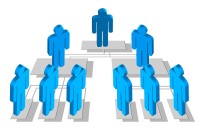- Home
- Business Processes
- Industry Knowledge
- Aerospace Industry
- Automotive Industry
- Banking Domain
- BFSI Industry
- Consumer/ FMCG Industry
- Chemicals Industry
- Engineering & Construction
- Energy Industry
- Education Domain
- Finance Domain
- Hospitality Domain
- Healthcare Industry
- Insurance Domain
- Retail Industry
- Travel and Tourism Domain
- Telecom Industry
- Leadership Skills
- eLearning
- Home
- Business Processes
- General Ledger (Record to Report)
- Global Business Services (GBS) Model
Global Business Services (GBS) Model
Global business services (GBS) is an integrated, scalable, and mature version of the shared services model. Global Business Services Model is a result of shared services maturing and evolving on a global scale. It is represented by the growth and maturity of the Shared services to better service the global corporations they support.
Global business services (GBS) is an integrated, scalable, and mature version of the shared services model. Global Business Services Model is a result of shared services maturing and evolving on a global scale. It is represented by the growth and maturity of the Shared services to better service the global corporations they support. Global Business Services framework adds value to the shared services model by taking the model beyond labor arbitrage. This model adds consistent approaches to global services strategy formation, transition, and governance resulting in improved collaboration across the entire enterprise ecosystem. GBS provides services beyond transactional functions and provides value to the organization by enabling standardization, scalability, technology, well defined and optimized processes and business analytics. Under this model the entire organization collectively start leveraging global business services to accelerate attainment of corporate strategies.
General Electric, Bank of America, American Express are some examples who have already established Global Business Services model for their entire finance functions where a Global Operations Finance Team provides record to report and statutory and tax compliance services to all the businesses under its umbrella.
Main Features of GBS model:
- Integrated compilation of service offerings for multiple support functions within a company
- Global in nature with respect to both delivery centers and customers
- Service provides can be both internal and/or external
- Service providers are managed centrally by GBS organization
- Service offerings by GBS are standardized and follow process model with defined roles and responsibilities and handshakes at each interaction
- Global process ownership
- Integrated application suite(s)/Information Systems across the enterprise with well-defined processes and best practices
- Virtual centers of expertise to build and disseminate subject-matter expertise
- Defined and well tracked operational metrics to measure speed, quality and costs
- Standardization of processes and practices that result in the GBS organization being run like an independent entity
- Ability to take competitive advantage of cost arbitrage and third party expertise
- Mix of service delivery models - Captive offshore; In-house shared services centers; outsourced delivery models; “hybrids”
Value drivers of GBS Model
- Cost savings through economies of scale and labor arbitrage
- Simplification and standardization of processes
- Advanced analytics and visibility across different structures (legal/operational) of the enterprise
- Ability to hire and retain global talent
- Skill arbitrage: value derived from access to higher-skilled labor across globe
- Ability to work in shifts leveraging the time zone differences across globe
- Ability to deploy advanced tools and technology
- Ability to deliver scalability to processes and functions
Functions that can be shared across business units
- Sourcing and Procurement
- Buy to Pay – Accounts Payable
- Invoice to Cash – Accounts Receivable
- Payroll Management
- Record to Report – General Ledger
- Fixed Assets Management
- Statutory Reporting and Tax Reporting
- Human Resources
- Information Technology
- Vendor Management
- Customer Management
- Master Data Maintenance
All the models described above represent matrix structures. However, Matrix Structures can become overly complex, effectively having to uphold two hierarchies, with potential tensions between the two.
Related Links
You May Also Like
-
Multi Currency - Functional & Foriegn
Currency is the generally accepted form of money that is issued by a government and circulated within an economy. Accountants use different terms in the context of currency such as functional currency, accounting currency, foreign currency, and transactional currency. Are they the same or different and why we have so many terms? Read this article to learn currency concepts.
-
GL - Journal Posting and Balances
In this tutorial, we will explain what we mean by the posting process and what are the major differences between the posting process in the manual accounting system compared to the automated accounting systems and ERPs. This article also explains how posting also happens in subsidiary ledgers and subsequently that information is again posted to the general ledger.
-
In this article, we explain some commonly used subsidiary ledgers like accounts receivable subsidiary ledger, accounts payable subsidiary ledger or creditors' subsidiary ledger, inventory subsidiary ledger, fixed assets subsidiary ledger, projects subsidiary ledger, work in progress subsidiary ledger, and cash receipts or payments subsidiary ledger.
-
Global Business Services (GBS) Model
Global business services (GBS) is an integrated, scalable, and mature version of the shared services model. Global Business Services Model is a result of shared services maturing and evolving on a global scale. It is represented by the growth and maturity of the Shared services to better service the global corporations they support.
-
Different Types of Organizational Structures
Modern business organizations run multiple product and service lines, operate globally, leverage large number of registered legal entities, and operate through complex matrix relationships. To stay competitive in the current global business environment, they must often develop highly diverse and complex organizational structures that cross international borders.
-
What Is a General Ledger? General Ledger (also known in accounting as the GL or the Nominal Ledger) is at the heart of any accounting system. A general ledger is the master set of accounts that summarize all transactions occurring within an entity. Ledger is the skillful grouping and presentation of the Journal entries. Learn the accounting fundamentals, general ledger process, and general ledger flow.
-
GL - Review & Approve Journals
Review and Approval mechanisms ensure that the accounting transaction is reasonable, necessary, and comply with applicable policies. Understand why we need review and approval processes, what are they, and how they are performed in automated general ledger systems. Learn the benefits of having journal approval mechanisms in place.
-
Legal Structures in Businesses
Businesses not only vary in size and industry but also in their ownership. Most businesses evolve from being owned by just one person to a small group of people and eventually being managed by a large numbers of shareholders. Different ownership structures overlap with different legal forms that a business can take. A business’s legal and ownership structure determines many of its legal responsibilities.
-
In every journal entry that is recorded, the debits and credits must be equal to ensure that the accounting equation is matched. In this article, we will focus on how to analyze and recorded transactional accounting information by applying the rule of credit and debit. We will also focus on some efficient methods of recording and analyzing transactions.
-
Introduction to Organizational Structures
Organizations are systems of some interacting components. Levitt (1965) sets out a basic framework for understanding organizations. This framework emphasizes four major internal components such as: task, people, technology, and structure. The task of the organization is its mission, purpose or goal for existence. The people are the human resources of the organization.
Explore Our Free Training Articles or
Sign Up to Start With Our eLearning Courses

About Us
Learning
© 2023 TechnoFunc, All Rights Reserved











